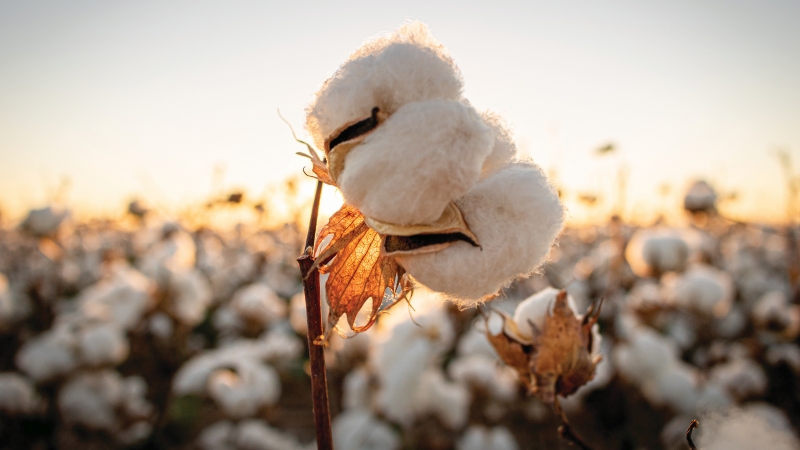Early Plant Growth, Late Season Gains
Growers assess most crop inputs the same way – they want to know how it will affect their bottom line. The question is simple: does it add value to their crop at harvest to justify the added expense during the growing season? For the early tests on EMD Crop BioScience’s newest input for cotton, Bolt, the answer could be “yes.”
Bolt contains a lipo-chitooligosaccharide (LCO) molecule that EMD says activates the plant’s genes to start and enhance cell division, promoting earlier growth on in the plant. Legume growers have benefited from this technology for several years, and EMD Crop Bioscience now offers the seed-applied technology for cotton.
“Commercializing this revolutionary technology for cotton growers marks a huge advancement. Nothing similar to LCO Promoter Technology is available in the cotton market today,” says Dr. Scott Fleetwood, Vice President for EMD Crop BioScience. “Growers are going to see stunning improvement in the early health of their cotton crop, as well as in pounds per acre come harvest.”
Throughout the Mid-South and Southeast, Helena Chemical Co. dealerships worked with local growers this season to manage Bolt test plots, with results bolstering Fleetwood’s claims. Growers, consultants and Helena reps attested to improved root systems, better overall plant health and higher yields in test plots in Mississippi and Georgia.
Mantee, MS, grower Sam Stone said his plots treated with Bolt all demonstrated better plant growth, although the difference was more noticeable in some fields. But overall, he liked what he saw and will give Bolt a try next year.
“We saw a visible difference in the crop, and I want to do some more experimenting with it. I saw enough difference and increase that I want to try it again. Of course the company furnished the product this season, but I would be willing to write a check to try it again,” Stone said. “When you see me willing to put some money in something – that speaks volumes, because I don’t like to invest money in a snake oil kind of thing. But there was definitely something in Bolt that grew those plants a little better.”
Survey Says …
According to Helena’s data, the plots at Stone’s farm averaged 93.1 more pounds of lint per acre for an input that costs less than $5. Paul Wood, Helena sales representative and certified crop consultant, said that’s what has impressed him most as he worked with Water Valley, MS, grower Travis Brooks.
“Every bit of information that we have picked up on Bolt, especially for the amount of money that it costs to put it in, has shown that it gives a really nice return. I wish we had the product out longer and on more acres, but I have been very impressed with what I have seen so far,” Wood said. “On the Bolt-treated cotton, I was impressed with the leaf diameter early on in the season – it was 1/2 to 3/4 of an inch greater. When the plant was about 6 inches in height, it had a little more girth and seemed to have a little more vigor. At harvest, I could see a greater difference with the naked eye, and we ended up with 280 pounds more lint per acre.”
Helena manager Ricky Sloan saw similar results on a test plot at Turners Farm in Ochlocknee, GA. Farmed by Max, Gerard and Reid Turner, those two Bolt plots averaged 210 and 142 increased pounds of lint per acre. Sloan said the Bolt plots looked better throughout the season, from early squaring through harvest.
“We did a boll count right before defoliation, and it was a heavier boll load with more boll retention. Earlier in the season, at early squaring, we dug some roots and saw better root systems with more feeder roots,” Sloan said. “I think it gets the plant off to a faster start. It was pretty dry through here early in the season, and the Bolt-treated cotton got on up and grew with a good roots system.”
Captions:
Paul Wood shows the better root structure of a Bolt-treated plant on Travis Brooks’ farm in Water Valley, MS.
On the right, a plant from the Bolt-treated plot on Sam Stone’s Farm in Mantee, MS, shows a significant increase in boll load compared to a plant from the check plot.









